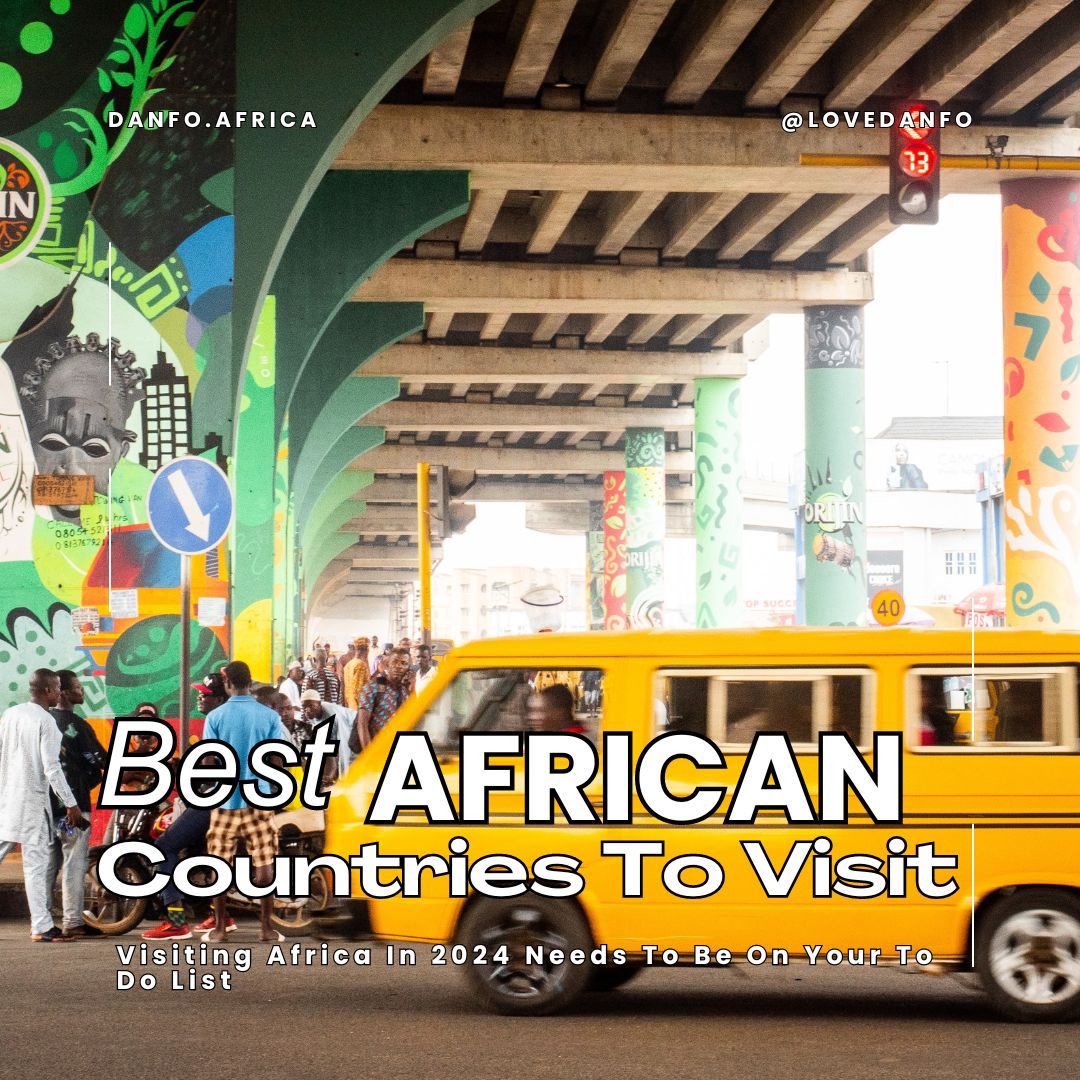INTRODUCTION
Africa is a diverse continent with many cultures, landscapes, and experiences. It attracts adventurous travelers looking for unique destinations to explore. Africa has something for everyone, whether you love nature, festivals, or food. You can enjoy the beautiful scenery, lively festivals, and delicious African dishes during your travels.
In this article, we will explore the top African countries to visit in 2024 in no particular order, showcasing their best tourist attractions, festivals, delicious cuisines, street food, and nature reserves.
Make sure these countries are on your radar as you plan your trip to Africa.
SIERRA LEONE

The name Sierra Leone comes from the Portuguese word Serra Lyoa, which translates to Lion Mountains. Its capital, Freetown, is called “the Athens of West Africa” because it has one of the largest natural harbors in the world.
TOURIST ATTRACTIONS IN SIERRA LEONE
During your Sierra Leone trip, you ought to stop at these locations.
The Bai Bureh Monument: The Bai Bureh monument, in Yonibana celebrates Bai Bureh, a Temne leader who led a rebellion against British rule in the late 1800s.
Victoria Park: It is one of the largest markets for tailored clothes, hats, and leather shoes.
The Sierra Leone National Museum: The museum, located in Freetown, contains historical, ethnographic, and archaeological collections.
Bunce Island: This is a historic site where British traders sold slaves during the transatlantic slave trade.
King’s Gate: This is the gateway to the King’s yard, which was the first assembly point for rescued slaves.
WILDLIFE AND NATURE RESERVES IN SIERRA LEONE
Niokolo-Koba National Park: Niokolo-Koba is the biggest park in the country. It has many different animals and landscapes like savannah, forest, and rivers.
Tacugama Chimpanzee Sanctuary: The sanctuary’s focuses on rehabilitating and conserving chimpanzees rescued from the illegal pet trade and habitat loss.
Djoudj National Bird Sanctuary: The sanctuary is an important stopover for migratory birds, offering refuge to various bird species.
Tiwai Island Wildlife Sanctuary: This is a protected area with lots of animals, especially birds and primates.
Outamba-Kilimi National Park: At this park, you can see various animals like chimpanzees, hippos, and different bird species
TOP CUISINE IN SIERRA LEONE
The cuisine culture of Sierra Leone is deep and rich. You should try at least one of these Sierra Leone cuisines while you are in the country.
Fufu: Besides rice, fufu is often paired with flavorful dishes like cassava leaf stew and groundnut soup, offering a hearty and satisfying meal.
Cassava Leaf Stew: This stew is made with cassava leaves, providing a savory accompaniment to various dishes or as a stand-alone option.
Yebeh: Yebeh is a stew made with starchy vegetables like potatoes, plantains, cassava, and yams, boiled to perfection.
Groundnut Soup: Groundnut soup is a meat and vegetable stew cooked in thick peanut sauce.
Falafel: This delicious food originates from the Middle East. Falafel consists of fried balls or patties made from ground chickpeas, fava beans, or both, seasoned with cumin, coriander, garlic, and salt for a flavorful treat.
FESTIVALS IN SIERRA LEONE
Sierra Leone International Film Festival: This annual six-day event takes place in March each year. It comprises film screenings, discussions, and educational seminars.
Sierra Arts and Culture Festival (SLACFest): The festival is a celebration that honors the rich diversity and spirit of Sierra Leone arts and culture.
Ballanta Music Festival: The two-day festival offers performances by local musicians spanning a wide spectrum of musical genres for both domestic and foreign attendees.
Lantern Festival: This significant occasion honors numerous important historical milestones in Sierra Leone, including independence, and combines aspects of music, craft, and culture.
Check out our Sierra Leone tour
GHANA
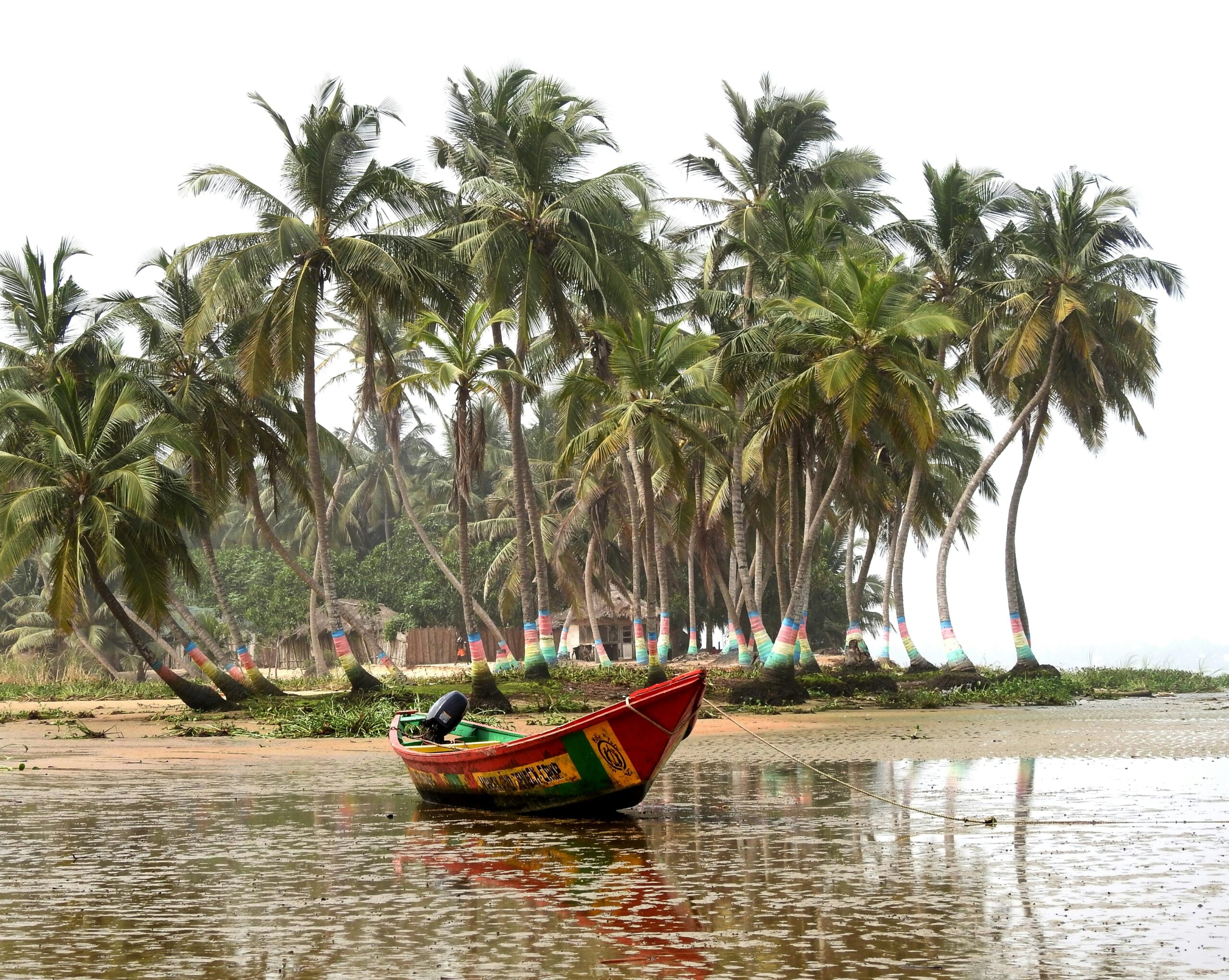
Ghana, the gateway to Africa, is home to historical landmarks, coastal forts and castles, festivals, customs, and lively marketplaces.
TOURIST ATTRACTIONS IN GHANA
Some of the tourist attractions to visit on your trip to Ghana include the following:
Kajetia Market: This captivating and throbbing Kejetia is a bustling and vibrant hub of commerce, culture, and daily life.
Cape Coast Castle: This Castle is one of the world’s most important slave-holding sites.
The Tenzug Shrine: The Shrine is a sacred spiritual sanctuary that holds deep cultural and religious significance for the people.
Sirigu Pottery Village: This artisan village is renowned for its traditional pottery-making techniques passed down through generations and unique architectural style.
The Kwame Nkrumah Memorial Park: The park contains a mausoleum and museum dedicated to the memory of the esteemed Osagyefo Dr Kwame Nkrumah.
WILDLIFE AND NATURE RESERVE IN GHANA
Kakum National Park: The park is home to endangered forest elephants, colobus monkeys, and different species of birds and butterflies.
Ankasa Conservation Area: This biosphere reserve has an intact wet evergreen forest and serves as a nature museum.
Mole National Park: The park has bus-sized elephants, roving gangs of baboons, warthogs, waterbucks, and antelopes.
Tanoboase Sacred Grove: It is a living testament to traditions and natural beauty, showcasing the harmony between culture and nature.
Lake Volta: This lake is the largest artificial reservoir worldwide.
TOP CUISINES IN GHANA
Experience the rich culinary creativity of Ghana through a vibrant array of dishes bursting with local spices and ingredients.
Waakye: It is made by white rice and black-eyed peas (or cowpeas/red beans) together. They’re boiled with waakye leaves, which not only give the dish a unique flavor but also turn the rice a reddish color.
Kenkey and Fried Fish: Kenkey is a dish consisting of corn dough shaped into balls, wrapped in dried corn leaves, and boiled until tender. It is served with a choice of seafood and a spicy pepper sauce.
Banku: This Ghanaian dish is made by combining cassava and maize dough. It is commonly served with soups, stews, and sauces. A popular accompaniment is tilapia fish seasoned with spices, chopped tomatoes, and onions, and garnished with hot peppers.
Kontomire stew: The stew is made with salted fish, boiled eggs, and soft cocoyam leaves paired with boiled yams, plantains, and avocado.
Wasawasa: This dish is made from dried yams, peeled and ground into flour, and then cooked. It is typically served with a spicy black pepper sauce and a stew, topped with sliced onions and tomatoes.
FESTIVALS IN GHANA
AfroFuture: This festival, formerly named Afrochella, is an annual street art festival celebrating African music, fashion, art, and culture.
Akwasidae Festival: Celebrated every sixth Sunday as per the Ashanti calendar, this festival features lively drumming and dancing performances.
Homowo (hooting at hunger) Festival: It is a celebration of harvest and migration observed by the Ga people of Accra.
Chale Wote Street Art Festival: A nonprofit, week-long festival that serves as an alternative platform to showcase art, music, dance, and performances. Unlike traditional art events confined to galleries, this festival brings art to the streets, creating a vibrant and accessible experience for all attendees.
Panafest (Ghana): The Pan-African Historical Theatre Festival is held every two years in Ghana to celebrate African culture, heritage, and identity.
Check out our Ghana tour
SENEGAL
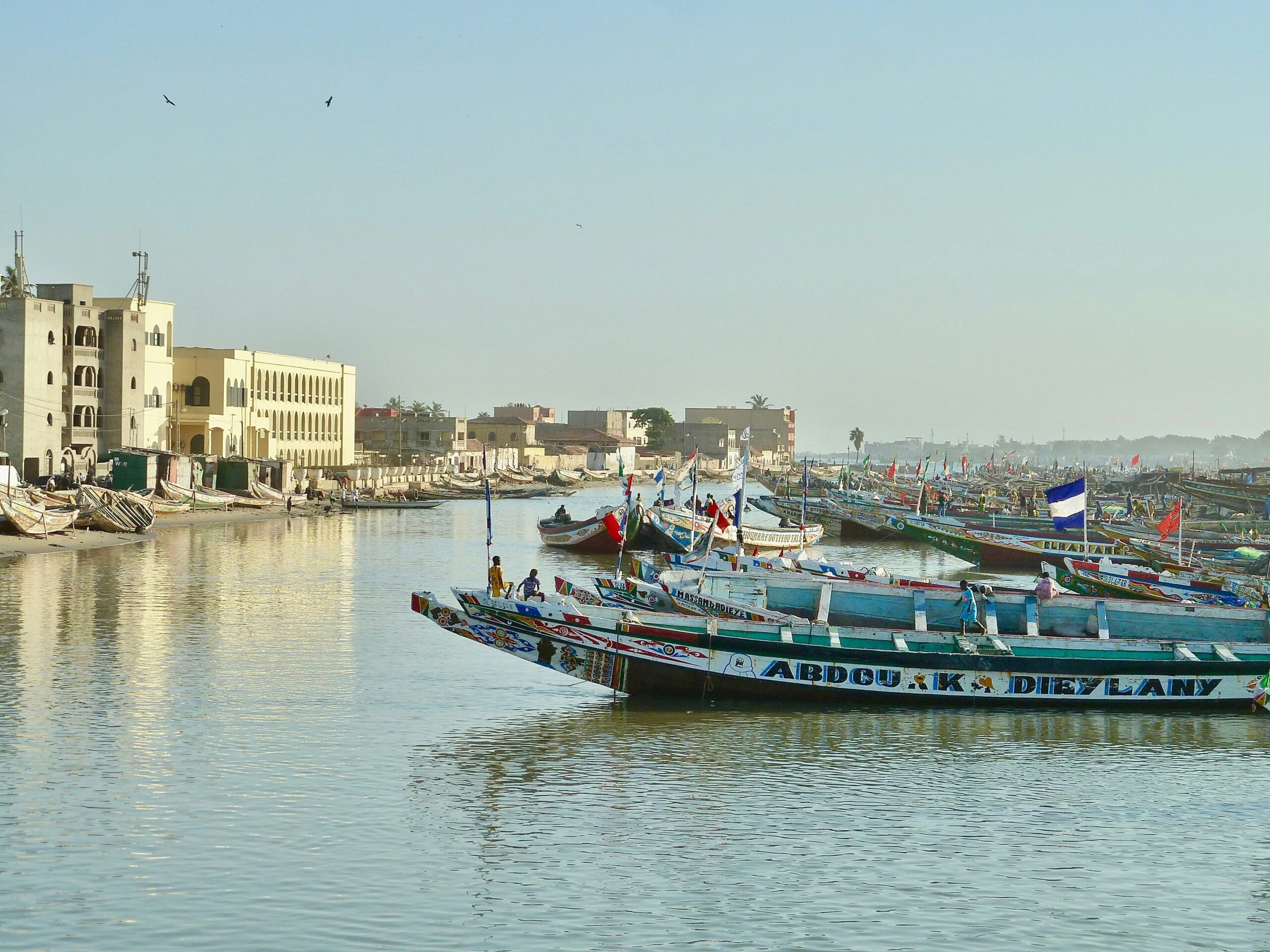
Senegal is a fantastic destination with a vibrant and varied culture. The ethnic groups, including the Wolof, Serer, Fulani, and Mandinka, amongst others, shape the diverse culture.
TOURIST ATTRACTIONS IN SENEGAL
Goree Island: The island became infamous for its role in the Atlantic slave trade.
Monument de la Rennaissance Africaine: It is the highest statue on the African continent.
Saint-Loius: This is the earliest French colony in West Africa.
Dakar’s Marché Kermel: A market where you can purchase traditional crafts, textiles, jewellery, and mementoes.
Lake Retba: It is also known as Lac Rose or Pink Lake. It’s a natural wonder and is listed among the world’s 10 most amazing lakes.
WILDLIFE AND NATURE RESERVE IN SENEGAL
Listed below are some of the natural reserves in Senegal where visitors can see a variety of animas, including birds, monkeys, and marine life.
Djoudj National Bird Sanctuary: This unique site is a haven for bird enthusiasts. With its diverse array of species like pelicans, flamingos, and herons.
Niokolo-Koba National Park: It is one of the biggest national parks in West Africa, known for its diverse wildlife, including lions, elephants, chimpanzees, and numerous bird species.
Saloum Delta National Park: The features of this biosphere reserve are mangrove forests, saltwater estuaries, and varied ecosystems.
Bandia Wildlife Reserve: This reserve provides safari tours that allow guests to witness a range of African fauna, including antelopes, giraffes, rhinos, and zebras.
TOP CUISINES IN SENEGAL
Senegal’s cuisine is a mix and reflection of West African, French, and Arab culinary traditions. Fish and seafood play a big role in Senegalese cuisine, and rice is a common grain used in many dishes.
Thieboudienne: Often regarded as the national meal of Senegal, thieboudienne is a tasty rice and fish dish cooked in a tomato-based sauce with vegetables such as eggplant, carrots, and cabbage.
Mafe: Mafe, often served with rice, is a filling stew comprised of a thick peanut sauce, vegetables, and meat, often lamb, beef, or chicken.
Dibi: This is a grilled meat seasoned with spices, usually goat or lamb, served with hot sauce or mustard for added flavor.
Ceebu Jen: Sometimes referred to as Tiebou Jeun or Ceebu Jen, this meal is comparable to thieboudienne but is prepared with beef or chicken rather than fish.
Attieke: Grated, dried, and cooked fermented cassava is used to make this side dish. It is frequently served with grilled meat or seafood.
FESTIVALS IN SENEGAL
Senegalese culture is deeply rooted in music, and the nation regularly organizes music events.
Saint-Louis Jazz Festival: This festival celebrates the rich musical heritage of jazz and the historical significance of African music. It is held in the ancient city of Saint-Louis.
Dak’Art – Biennale de l’Art Africain Contemporain: Dak’Art is a contemporary African art show that raises awareness of African art and culture worldwide.
The Dédougou festival: known as the Festival International des Masques et des Arts, honors traditional masks and artistic expressions from Senegalese and other West African civilizations.
Rek Bi Festival: Featuring breakdancing, rap music, graffiti art, and DJ sets, Rek Bi Festival honors Senegalese hip-hop culture.
The International Festival of Black Arts, also referred to as FESMAN (Festival Mondial des Arts Nègres), is a cultural event that celebrates African arts and facilitates cultural exchanges between African nations and the African diaspora, embodying the principles of Pan-Africanism.
Check out our Senegal tour
TANZANIA
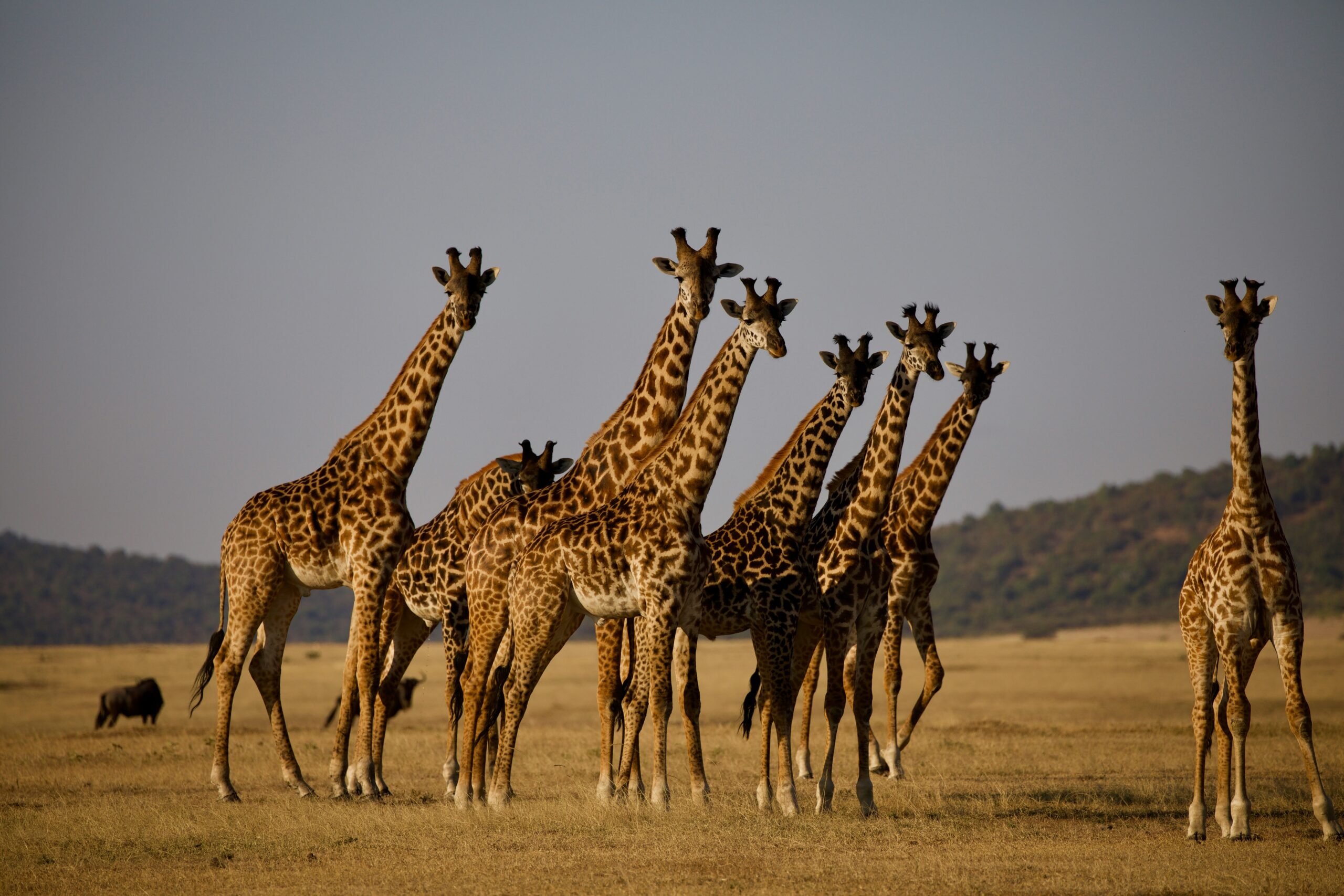
The United Republic of Tanzania is the largest East African country with the lowest population, and it includes the islands of Zanzibar, Pemba, and Mafia. Tanzania’s unique culture is a captivating blend of African, Arab, European, and Indian influences.
TOURIST ATTRACTIONS IN TANZANIA
Tanzania is home to the Great Wildebeest Migration, some of the biggest parks in Africa, and unique landscapes.
Kilimanjaro: Africa’s highest mountain and one of the most iconic landmarks on the continent
Tanganyika Lake: This lake is the longest freshwater lakes in the world, holding a remarkable eight percent of the world’s freshwater due to its immense volume and depth.
Ngorongoro Crater: This safari destination ranks among the world’s most magnificent wonders. Recognized as one of Africa’s Seven Natural Wonders, it is an unparalleled beauty, a must-visit for any nature enthusiast.
Zanzibar: An archipelago off the coast of Tanzania’s mainland, Zanzibar is well-known for its beautiful beaches, azure waters, and Stone Town.
WILDLIFE AND NATURE RESERVE IN TANZANIA
Nearly thirty per cent of the country is a National Park, making it one of Africa’s most visited and beloved safari destinations.
Serengeti National Park: It is one of the most famous wildlife reserves in the world. It is home to various species of large mammals, and is renowned as the 7th World Wonder.
The Selous Game Reserve: This reserve has the largest population of elephants.
Mikumi National Park is renowned for its vast grasslands, acacia trees, and abundance of wildlife, which includes lions, giraffes, zebras, and wildebeests.
Ruaha National Park is the largest national park in Tanzania. It is a remote wilderness area with great chances for seeing wildlife.
Mahale Mountains National Park is known for its chimpanzee population and provides tourists with an exceptional chance to hike through verdant rainforests.
TOP CUISINE IN TANZANIA
If you are looking to expand your palate, then Tanzania is the place for you. The use of coconut, cardamom, garlic, turmeric, and spices is prominent in some traditional recipes.
Ugali: It is a stiff dough prepared with cornmeal (maize meal), cassava flour, sorghum, or millet and served with a sauce that contains fish, meat, cooked vegetables, or beans.
Nyama Choma (grilled meat): It is a barbecue of goat, fish, or chicken, alongside barbecued bananas or Ugali as side dishes.
Sukuma Wiki: This dish is often paired with ugali. Sukuma (colewort or collard greens) is a type of leafy vegetable similar to kale. It is mixed with ingredients like tomatoes, onions, and various spices like cumin, coriander, and saffron powder.
Pilau: This is a rice dish flavored with spices and prepared in stock with the addition of any protein source of choice. It is usually served with kachumbari, an uncooked salad dish made of chopped tomatoes, chili peppers, and onions.
Mshikaki: This dish is skewered marinated beef seasoned with ginger, lemon, and hot peppers, grilled over charcoal.
FESTIVALS IN TANZANIA
Sauti za Busara, Zanzibar, Tanzania: This East African music festival, held in Stone Town, Zanzibar, showcases a diverse lineup of traditional and contemporary African music, including live performances, workshops, and cultural exchanges.
The Karibu Travel & Tourist Fair. It brings together professionals from the travel industry as well as exhibitors from Tanzania and other nations in the area to promote tourism.
The Zanzibar International Film Festival (ZIFF): This annual festival supports filmmaking and cross-cultural interactions.
Nane Nane Agricultural Fair: The fair, held every year on August 8, commemorates the economic contributions made by the agricultural sector.
Check out our Zanzibar tour
NIGERIA

Nigeria known as the “Giant of Africa” is a vibrant country and the most populous in Africa. Its rich culture is a blend of history, diversity, legends, conquests, and innovation.
TOURIST ATTRACTION IN NIGERIA
The Osun-Osogbo Sacred Grove: This sacred grove honors Osun, the Yoruba goddess of fertility, and is situated in Osun State. It serves as a hub for customary ceremonies and celebrations and is home to shrines, sculptures, and artwork.
The Sukur Cultural Landscape: It is a scenic blend of nature and culture that lies within the Cameroon-Nigeria borderlands
Sungbo’s Eredo: It is a massive ancient earthwork and one of the largest precolonial monuments in Africa, offering captivating insights into the country’s rich heritage.
Olumo Rock: Tourists can explore the rock’s caves, tunnels, and shrines while taking in expansive views of the city below.
Nike Art Gallery is a renowned art museum and cultural hub showcasing modern Nigerian art and traditional African artefacts.
Kano City Walls: These magnificent walls and gates date back to the fourteenth century, and they provide insights into Nigeria’s rich cultural past.
Sussane Wenger’s House: This remarkable house is located in the heart of Oshogbo; it was where she produced artworks inspired by Yoruba mythology, folklore, and spirituality.
WILDLIFE AND NATURE RESERVE
The Lekki Conservation Center is a wildlife sanctuary and nature reserve in Lagos that provides opportunities for canopy walks on a 401-meter suspended bridge, nature walks, and birdwatching.
Yankari National Park: One of Nigeria’s biggest wildlife reserves, Yankari National Park is situated in Bauchi State.
Gashaka-Gumti National Park: It is the largest national park in Nigeria, and it is well known for having a variety of ecosystems such as savannah grasslands, montane forests, and rough mountainous terrain.
Old Oyo National Park: The park is renowned for its rough topography, deep forests, and undulating hills. It is home to historical sites and archaeological digs, including the remains of the Old Oyo Empire.
Chad Basin National Park: The park is renowned for its semi-desert and dry savannah ecosystems.
TOP CUISINES IN NIGERIA
Nigerian cuisines may have many similarities with her West African and Central African neighbors like Ghana, Benin, and Cameroon.
FUFU: This is a staple food made from cassava (fermented or unfermented) that has been boiled, pounded, and then formed into balls. It is used as a scoop for soups and stews.
Jollof Rice: This dish is popular in many West African countries like Nigeria, Ghana, Sierra Leone, Senegal, Togo, and Gambia.
Eguisi Soup: This soup is made with ground egusi (protein-rich seeds of plants like squash, melon, and gourd that have been dried), palm oil, onions, hot peppers, locust beans (iru), African crayfish, stockfish, any animal protein source of your choice, and leafy vegetables.
Pepper Soup: This popular African soup is a spicy and watery soup made with peppers and an assortment of meat like goat, chicken, oxtail, or fish.
Amala: This is a beloved comfort food in Nigeria, especially popular in the southwest. It’s a fluffy dough made from yam flour, typically served with soup.
FESTIVALS IN NIGERIA
Eyo Festival: Adamu Orisha Play, also known as the Eyo festival, honors the spirits of the ancestors and features a colorful parade of “Eyo” masquerades donning white robes and headdresses.
Osun-Osogbo Festival: Osun is one of the Yoruba deities, the goddess of fertility. This annual celebration includes intricate rituals, traditional music and dance performances, and a march to the Osun-Osogbo Sacred Grove.
Argungu Fishing Festival: One of Nigeria’s most well-known cultural festivals, the festival is held annually in Kebbi State. It also includes customary fishing contests in the Matan Fada River.
New Yam Festival: The festival, also known as Iri Ji Ohu, marks the start of the yam harvest season. The festival honors the gods for a fruitful harvest with ceremonies, rituals, and cultural performances.
Lagos International Jazz Festival: The festival brings together jazz musicians, jazz enthusiasts, and music lovers from Nigeria and all over the world.
Check out our Nigeria tour
BENIN
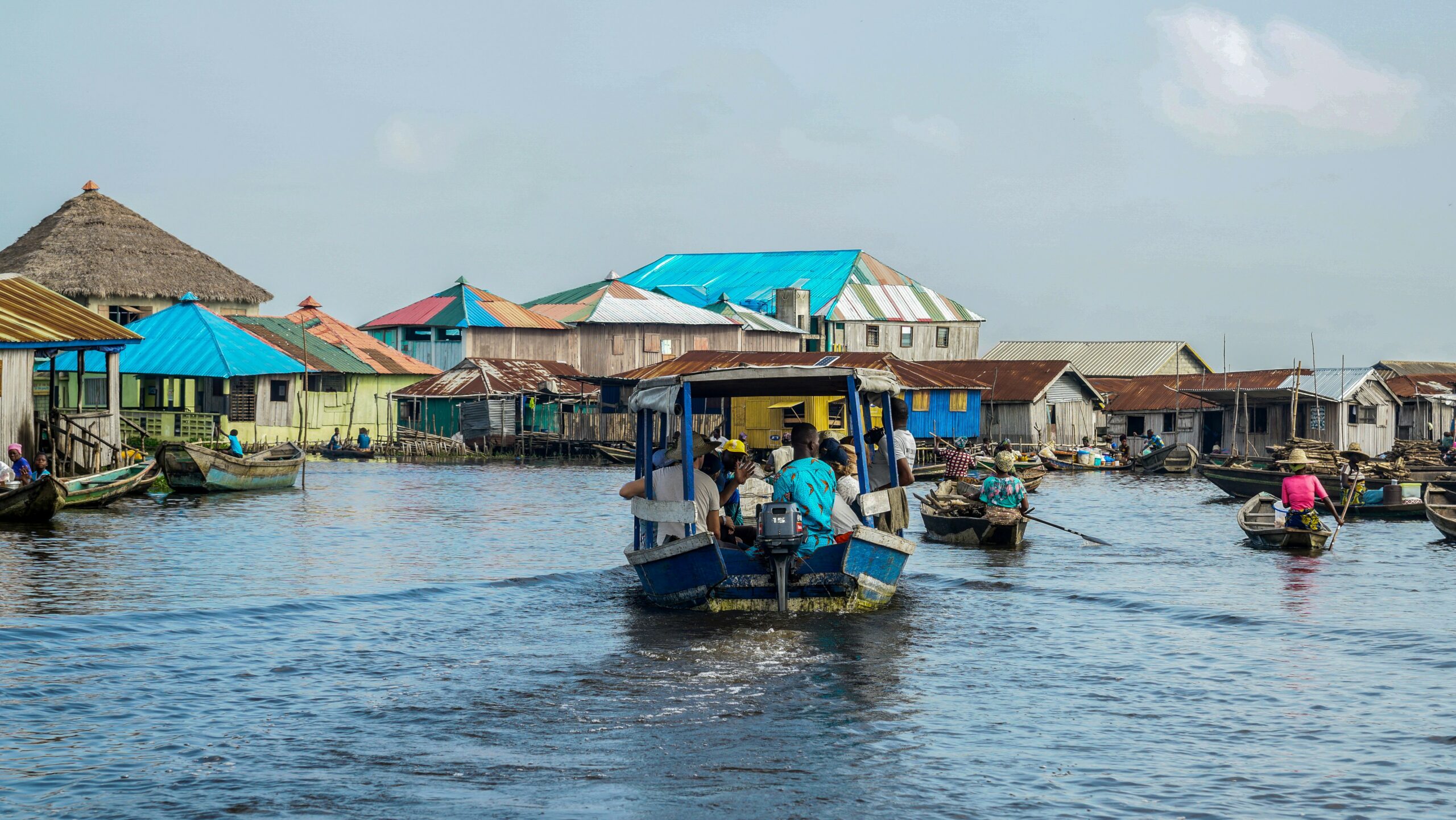
The Republic of Benin is an amazing destination to visit, with its diverse cultures, rich history, amiable populace, and voodoo arts.
TOURIST ATTRACTIONS IN BENIN
Door of No Return: This memorial arc is a remembrance of the slave trade era and the spot where slaves left Africa with no hopes of returning.
Artisanal Centre: This market has handmade items, colorful clothing and textiles, intricate wood carving, and pottery, amongst other items for souvenirs and gifts.
Ganvié Lake Village: This stilted village in Nokoué Lake, is the largest floating village in Africa.
Dantokpa Market: It is the biggest open-air market in West Africa
Ouidah: This famous slave port and the birthplace of voodoo, with its fetish market, a sacred forest of Kpase, and Temple of Scared Pythons.
WILDLIFE AND NATURE RESERVES IN BENIN
Pendjari National Park: Home to some of the last remaining big wildlife in West Africa, it also conserves epic migration routes.
W National Park: It is a major national park and a significant natural habitat for threatened species valuable to both conservation and genetic research.
TOP CUISINE IN BENIN
Watché or Atasi: It is a dish of rice and beans cooked together and served with traditional stews.
Peanut soup: This soup comprises peanuts, tomatoes, and carrots served with chicken.
Dahomey Fish Stew: This traditional stew is garnished with local spices and made with filet from low-fat fish.
Telibo: This black or brown paste is prepared from yam pods, and it goes well with soup, stews, or sauce.
Djewo/Amiwo: It is a corn flour dough seasoned with garlic, onion, and chilli.
FESTIVALS IN BENIN
The Republic of Benin has several festivals, most of which are linked to culture.
Voodoo Festival: A festival held in honor of nature and ancestral spirits. Voodoo practice is revered as a crucial link between the ancestors and the people.
The International Festival of Dahomean Culture: This festival highlights and celebrates the cultural diversity of the country.
Quintessence Film Festival: An annual film festival celebrating both local and international cinema.
Gelede Festival: This festival honors and pays respect to the female elders and women in the community.
Yam Festival: The yam festival celebrates the harvest of new yams. People eat them and thank the gods for a good harvest.
Check out our Benin tour
SOUTH AFRICA
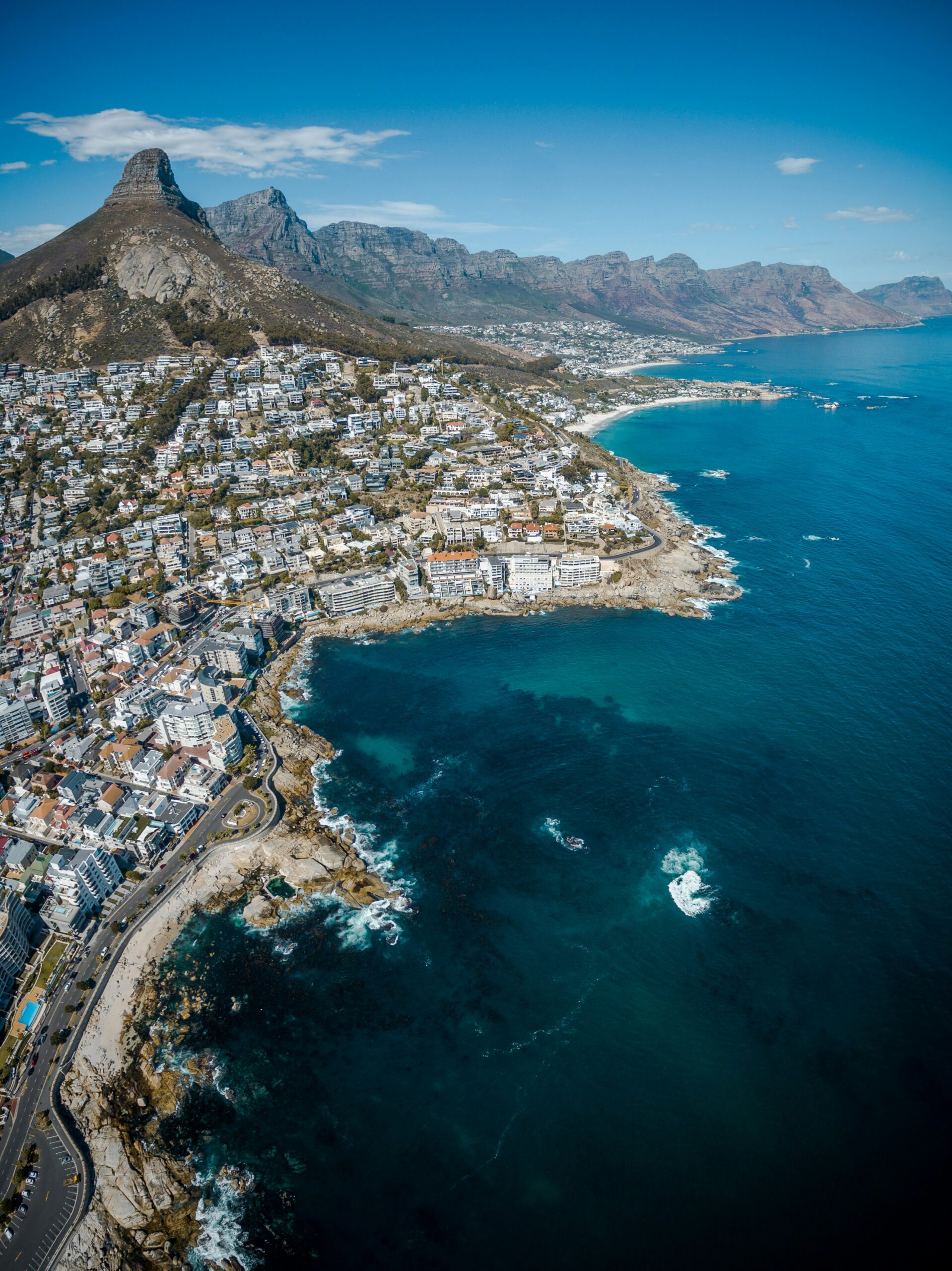
South Africa is a fun place to visit. It has amazing landscapes, wildlife and rich cultural heritage, with diverse cultures like Zulu, Xhosa, and Afrikaans.
TOURIST ATTRACTIONS IN SOUTH AFRICA
Cape Town: It is a coastal city famous for its natural beauty, including Table Mountain, the Cape of Good Hope, and the Kirstenbosch Botanical Gardens.
Robben Island: This is a historic island where Nelson Mandela was imprisoned for 18 years during apartheid.
Durban: This city is on the east coast of South Africa and is known for its beaches, Indian and Zulu cultures, and vibrant nightlife.
Soweto: A township near Johannesburg with a rich history and culture, including the Nelson Mandela National Museum and the Hector Pieterson Memorial.
The Winelands: This region near Cape Town is known for its picturesque vineyards, wine tastings, and gourmet cuisine.
WILDLIFE AND NATURE RESERVE IN SOUTH AFRICA
South Africa is renowned for its diverse range of wildlife and breathtaking natural landscapes. The oldest Baobab tree, believed to be 6,000 years old, is found in South Africa.
Kruger National Park: It is one of Africa’s largest game reserves, known for its wildlife safaris and opportunities to see the “Big Five” (lion, elephant, leopard, rhino, and buffalo).
Hluhluwe-iMfolozi Park: The park is the oldest officially recognized nature reserve in Africa, and it is well-known for its conservation efforts to prevent the extinction of the white rhinoceros. It is also home to the Big Five, cheetahs, wild dogs, and a variety of bird species.
Table Mountain National Park: This World Heritage Site is home to a wide diversity of plant and animal species and provides a diverse range of ecosystems.
iSimangaliso Wetland Park: This wetland park is one of South Africa’s most important coastal reserves and features a variety of environments.
The Garden Route – It is one of South Africa’s most picturesque and well-liked travel destinations, with its scenic towns and stunning beaches.
TOP CUISINE IN SOUTH AFRICA
South African cuisine has its influences from both the country’s indigenous population and external cultural influences. When you set foot on South African soil, don’t leave without indulging in some of the cuisines it has to offer.
Biltong and Droewors: Biltong is thinly sliced, air-dried meat, and droewors is an air-dried sausage cured in a mixture of vinegar, salt, sugar, and spices.
Roosterbrood/Roosterkoek: This is grilled bread that is prepared with flour, yeast, sugar, salt, and water.
Biryani: It is prepared with layers of lentils, potatoes, and basmati rice, seasoned with a variety of herbs and spices, and lamb or chicken.
Denningvle: It is a stew prepared by simmering meat with tamarind paste, onions, garlic, and various spices.
Malva Pudding: Made with apricot jam and covered in a hot cream sauce, it is a sweet and sticky baked sponge pudding.
FESTIVALS IN SOUTH AFRICA
Cape Town International Jazz Festival: As one of the largest jazz festivals in Africa, this event attracts top local and international artists for two days of world-class music performances in Cape Town.
Durban International Film Festival: This prestigious film festival showcases a diverse selection of African and international cinema, including feature films, documentaries, and short films, attracting filmmakers and industry professionals from across the globe.
Cape Town Minstrel Carnival (Tweede Nuwe Jaar): This colorful and lively carnival, also known as the Kaapse Klopse, takes place on January 2nd in Cape Town, featuring vibrant parades, music, and dance performances by local minstrel troupes.
The Soweto Wine and Lifestyle Festival: The festival honors the wine and lifestyle trends of South Africa. It includes gourmet food vendors, live music, cultural events, and tastings of a broad selection of regional wines.
Klein Karoo National Arts Festival (KKNK): This yearly arts festival honors Afrikaans culture and tradition through theatrical shows, musical acts, visual art exhibitions, and literary gatherings.
Check out our South Africa tour
NAMIBIA
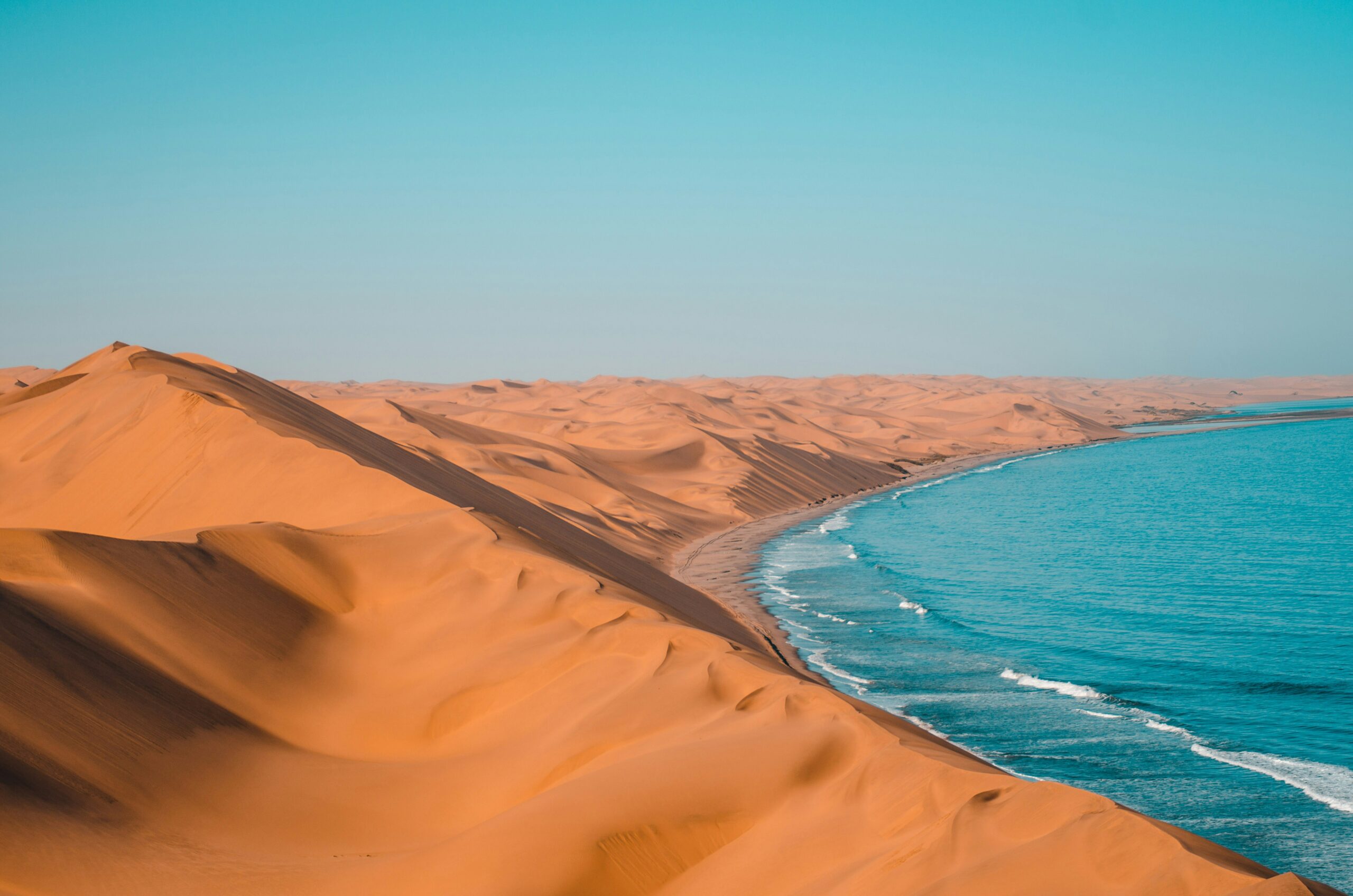
Namibia, sitting pretty in southwestern Africa, is a country with a vast landscape, diverse wildlife, rugged beauty, bustling little towns, and a rich cultural heritage. The arid plains, mountainous terrain, and enormous dunes, some of which are the highest in the world, contribute to the mesmerizing effect you get.
TOURIST ATTRACTION IN NAMIBIA
From the massive Namibian desert with red dunes to the wetlands of the lush green Caprivi Strip, wildlife, and impressive landscapes, here are some places to visit.
Twyfelfontein or Ui-//aes: The name Twyfelfontein means ‘the source of doubt’. This archaeological location is renowned for its remarkable rock art, showcasing a glimpse of a diverse collection of engravings, rock paintings, and intricate geometric patterns.
Namib Sand Sea: It is the oldest desert on the planet, encompassing vast dunes, and showcasing the extraordinary natural beauty of the desert environment.
Brandberg National Monument Area: The Brandberg, a national monument, is the highest mountain in Namibia with a high concentration of prehistoric rock art.
Sossusvlevi: This must-see incredible location with red dunes, white salt pans, and blue sky is situated in the Namib-Nauklut National Park.
Fish River Canyon: The Fish River is one of Africa’s most spectacular natural wonders, is the largest canyon in Africa and the second largest in the world after the Grand Canyon.
WILDLIFE AND NATURE RESERVE IN NAMIBIA
Namibia is an incredible paradise for exploring nature, and these sites in Namibia are acknowledged for their unique and valuable cultural, natural, artistic, and historical significance, and are preserved for future generations to enjoy.
Welwitschia Plains: These plains, with the highest concentration of Welwitschia mirabilis plants, lie between the Swakopmund River and Khan River and form part of the hyper-arid gravel plains of the Namib Desert.
Benguela Current Marine Ecosystem Sites: This naturally occurring site is where the Antarctic waters meet the South Atlantic. The resulting cold and oxygen content of the current attract diverse species of fish.
Etosha National Park: The park is home to a wide range of mammals and birds. Etosha National Park during the wet season looks like a green oasis with small waterholes at every corner of the park.
Cape Cross Seal Reserve: This reserve is home to one of the largest colonies of Cape fur seals in the world and the best location to witness thousands of seals lounging on the beach.
Deadvlei (dead marsh): This white clay pan with putrified trees surrounded by massive dunes has a surreal effect. The top of one of the dunes gives you some incredible views of the pan and the area.
TOP CUISINES IN NAMIBIA
Oshifima: This staple meal is made from maize meal (mieliepap), commonly referred to as pap or porridge, and is usually served with vegetables, grilled meats, or stews.
Potjiekos: This is a traditional stew with rich flavors using a variety of meats, vegetables, and spices.
Braai: Grilled meat served alongside pap (maize porridge) and grilled vegetables.
FESTIVALS IN NAMIBIA
International Film Festival Namibia (IFFN): It is an annual event that celebrates African and international cinema, showcasing a diverse selection of films, documentaries, and short films.
Marula Fruit Festival: The Marula Fruit Festival, is a 2-3 day festival of singing, eating, and drinking to celebrate the alcoholic drink made from the Marula fruit. held between March and May.
Nama Cultural Festival: This festival celebrates the culture, customs, and legacy of the indigenous ethnic group, the Nama people.
Windhoek Industrial and Agricultural Show: This annual event is one of the largest trade fairs in Namibia, showcasing the country’s agricultural, industrial, and commercial sectors.
Windhoek Carnival: This annual carnival is a colorful celebration featuring parades, music, dance, and cultural performances showcasing Namibia’s diverse cultural heritage.
Check out our Namibia tour
KENYA

Known as the ‘Jewel of Africa’, offers a wide choice of experiences for those seeking adventure, up-close encounters with wildlife, cultural immersion, and relaxation amidst spectacular natural beauty.
TOURIST ATTRACTIONS IN KENYA
Maasai Mara National Reserve: Maasai Mara is one of Africa’s most well-known safari sites, noted for its superb wildlife watching, particularly during the Great Migration.
Great Rift Valley: The Great Rift Valley, which stretches across Kenya, provides breathtaking scenery, hiking, birdwatching, and cultural interactions with nearby communities.
Diani Beach: Known as one of the best beaches in Africa, Diani Beach features immaculate white sands, crystal-clear turquoise waters, and a variety of beach and water sports.
Amboseli National Park: This park boasts breathtaking vistas of Mount Kilimanjaro. It is also home to a large herd of elephants and a variety of species.
Mount Kenya: The second-highest peak in Africa, Mount Kenya provides amazing trekking and climbing experiences along with stunning landscapes and a variety of habitats.
WILDLIFE AND NATURE RESERVE IN KENYA
Nairobi National Park: This park provides a distinctive safari experience with wildlife against the backdrop of the city skyline.
Lake Nakuru National Park: This park is a birdwatcher’s delight and home to lions, rhinos, and other animals.
Samburu National Reserve: This region is well-known for its distinctive wildlife and opportunities to engage with the Samburu people in their cultural practices.
Tsavo National Park: This enormous wilderness region is well-known for the Tsavo lions, a variety of species, and varied terrain.
Hell’s Gate National Park: Popular for hiking, rock climbing, and wildlife viewing, Hell’s Gate National Park is renowned for its spectacular scenery, high cliffs, and geothermal activity.
TOP CUISINE IN KENYA
Irio: This food is made up of green peas and mashed potatoes and is usually served with meat stew.
Pilau: The dish is made with pan-fried rice and fried meat cooked with spices such as cardamom, cloves, cinnamon, and cumin.
Matoke: This delicious dish can be taken with rice or ugali and is made up of plantain bananas cooked in oil with tomatoes, onions, garlic, and meat.
Sukuma wiki: Made from kales that are washed and chopped into small pieces and then fried with onions and tomatoes and taken with ugali.
Githeri: This is a mixture of maize and beans boiled to soften the ingredients, after which it is fried.
FESTIVALS KENYA
Kenya International Film Festival (KIFF): It is one of the biggest festivals in East Africa and features a wide range of regional and foreign features, documentaries, and short films.
Festival of the International Camel Derby and Culture: This event, which takes place in Maralal, Samburu County, honors the customs of the Samburu people and their special bond with camels.
Kenya Music Festival: The festival includes competitions in a range of musical genres, such as instrumental ensembles, solo acts, traditional dances, and choral music.
Nairobi International Trade Fair: The fair is one of the biggest agricultural gatherings in East Africa.
Koroga Festival: This Kenya’s premier music and culinary event takes place every year in Nairobi, featuring a range of food and drink vendors serving both local and foreign cuisines.
MOROCCO

Morocco is a North African country and has earned its place as one of the top tourist destinations. With its rich cultural heritage, ancient architecture, art, and traditions, it is a popular destination for adventure tourism, with opportunities for activities such as hiking, rock climbing, camel trekking, and surfing.
TOURIST ATTRACTIONS IN MOROCCO
Morocco has both cultural and natural attractions. Some of these attractions include;
The Ouzoud Waterfalls: This is a beauty to behold. It is a two two-tiered waterfall tucked away in the Atlas Mountains
Sahara Desert: The Sahara offers a once-in-a-lifetime adventure for travelers. Experience endless sand dunes, breathtaking sunsets, camel ride, camping, etc.
Mount Toubkal: It is the highest summit in North Africa, and is located in Toubkal National Park, which is part of the High Atlas Mountains.
The Kasbah of the Udayas: Nestled within the ancient city of Rabat, the Kasbah of the Udayas stands as a testament to Morocco’s rich history and architectural splendor
High Atlas Mountains: The mountain is home to a variety of mountain-adapted fauna, such as Barbary macaques and Barbary sheep (aoudad), as well as several bird species.
WILDLIFE AND NATURE RESERVE
Souss-Massa National Park: The park is renowned for its varied birdlife, which includes flamingos, herons, and migratory birds.
Ifrane National Park: This park is renowned for its cedar trees, and is also home to various bird species, including Barbary macaques and Barbary deer.
Dakhla Bay: This bay is a refuge for marine life, including dolphins, seals, and migrating birds.
Protected Areas of Sidi Ifni and Guelmim: These southern Moroccan coastal regions are crucial habitats for seabirds, particularly the critically endangered Northern Bald Ibis.
TOP CUISINES IN MOROCCO
Moroccan cuisine is known for its rich and diverse flavors, with a mix of Berber, Arab, and Mediterranean influences.
Tangine: This Moroccan cuisine’s signature meal is made with slow-cooked meat or fish, along with fruits, vegetables, and a mixture of paprika, saffron, cumin, and cinnamon.
Couscous: This meal is frequently referred to as the country’s national dish. It consists of steamed semolina grains served with a stew cooked with meat, vegetables, chickpeas, and a thick broth seasoned with herbs and spices.
Zaalouk: This savoury salad is made with cooked eggplant, tomatoes, onions, garlic, and a mixture of spices like cumin, paprika, and coriander.
Pastilla (B’stilla): This special delicacy is served at festive events and festivities, pastilla is a savory-sweet pastry.
Briouats: These pastries are made of thin phyllo dough layers encased in a savory or sweet filling, and baked or fried until golden brown and crispy.
FESTIVALS IN MOROCCO
Gnawa Festival: The Gnaoua World Music Festival held in Essaouira, held for 3 days in June, is a free-to-watch festival for mainly Gnawa music artists.
Marrakech International Film Festival: This renowned film festival held in Marrakech showcases a diverse selection of international cinema, attracting filmmakers, actors, and cinephiles from around the world.
Mawazine Festival (Morocco): It is also known as the Rhythms of the World Festival, and is one of the largest music festivals in Africa.
Essaouira Gnaoua World Music Festival: This music festival celebrates the rich traditions of Gnaoua music, blending African, Arab, and Berber influences.
Fez Festival of World Sacred Music: This festival in the historic city of Fez brings together musicians and spiritual leaders from around the world to celebrate the universal message of peace and harmony through sacred music.
CONCLUSION
In conclusion, while we’ve explored the top 10 African countries to visit, it’s important to note that Africa boasts a wealth of diverse destinations beyond this list. Each country offers its own unique blend of culture, history, and natural beauty.
As you plan your trip to Africa, remember to go along with essential travel items. Additionally, ensure you have all documents and meet the entry and visa requirements of these countries.
Africa promises an unforgettable travel experience that will leave you with cherished memories for a lifetime.
At Danfo Africa, we make the process and journey seamless and also offer bespoke tours to these countries. Join us in experiencing Africa.
